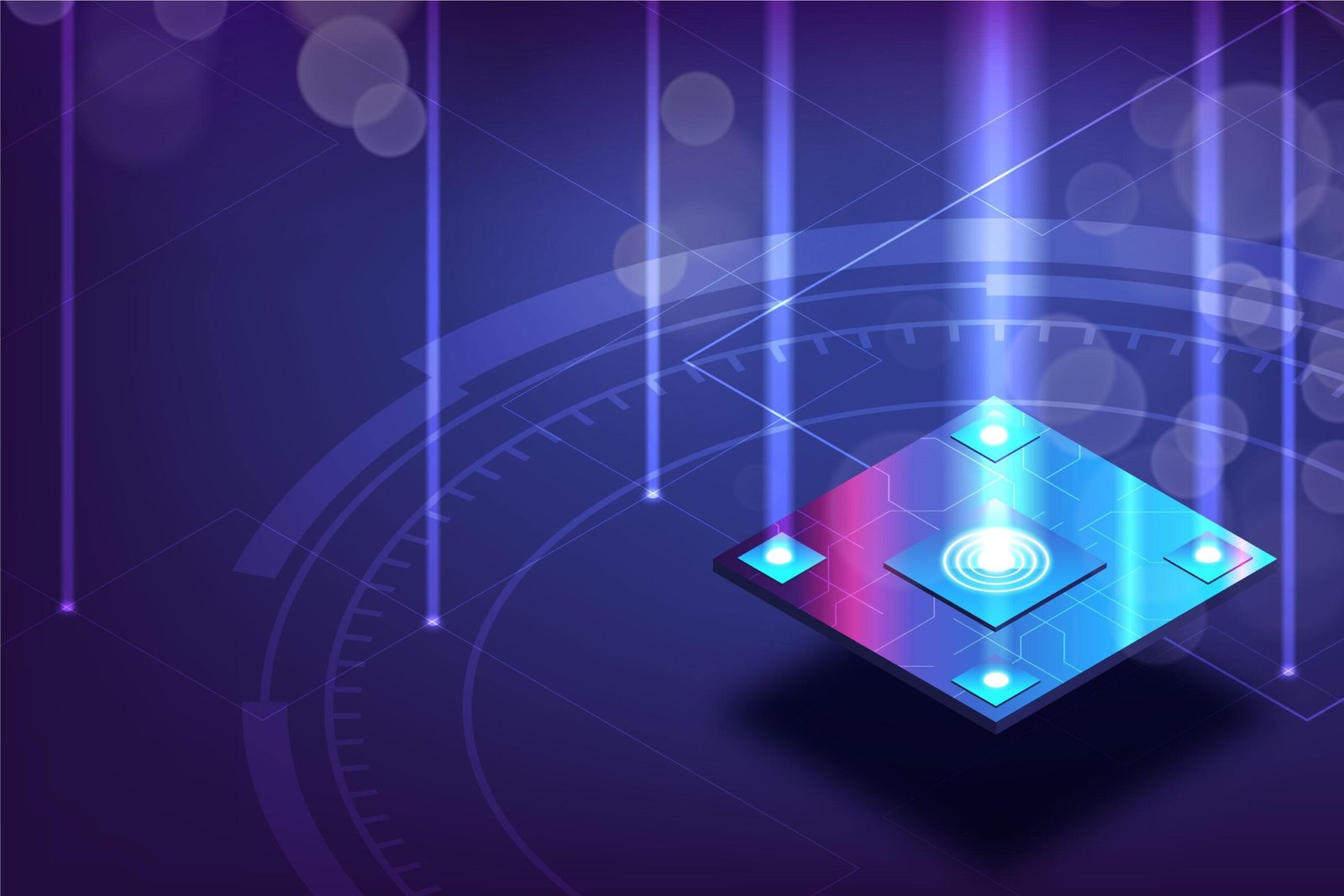
WiFi Alternatives: How LiFi is Gaining Momentum Across Industries
How did LiFi technology evolve to play such a revolutionary role in the world of connectivity? Which industries are the most affected by the adoption of LiFi applications?

LiFi or Light Fidelity is a communication technology that uses light signals to transmit data and information. Inspired by the bi-directional communication capabilities of wireless optical signals, LiFi utilizes the invisible light spectrum to carry data across devices. The demand for high-speed internet networks and an increased focus on cybersecurity have raised the popularity of LiFi products across different industries.
How did LiFi technology evolve to play such a revolutionary role in the world of connectivity? Which industries are the most affected by the adoption of LiFi applications? And how will LiFi affect the future of communication and connectivity? This blog dives deeper into these questions to help you understand the impact of internet connectivity at the speed of light!
The Evolution of Li-Fi Technology
LiFi was conceptualized for the first time in 2011 by Professor Harald Haas and his team of researchers. Their journey towards the discovery of LiFi technology began around 2005 at the Universities of Paris Saclay and Edinburgh. Initial research into LiFi was based on the use of light as a medium for bidirectional data transmission. Prof. Haas demonstrated the power of LiFi by using light from an LED bulb to stream a high-definition video during his 2011 TED Talk. It was in this talk that he introduced the term “Light Fidelity” for the first time. In 2012, Prof. Haas started an original equipment manufacturing company called PureLiFi to commercialize LiFi. Around the same time, researchers from the University of Paris-Saclay founded Oledcomm to build customized LiFi products.
Over the years, researchers have made significant advancements in improving the usability of LiFi technology. Many new companies have taken up R&D to enhance the speed, efficiency, and security of LiFi-based products. Technological advancements have led to the achievement of better modulation, advanced signal processing, and lower latency for LiFi signals. Standardization of LiFi technology by the adoption of IEEE 802.11bb protocols has bolstered its growth and adaptability.
LiFi-based internet networks have taken over the world of innovative communication technologies by providing an alternative to the traditional internet. LiFi allows users to do away with their dependence on the overcrowded radio spectrum and experience a new version of internet connectivity. LiFi internet relies on near-infrared and invisible light signals to transmit data, leading to reduced latency and better connection stability. Companies specializing in LiFi-enabled products are on a mission to speed up the widespread adoption of LiFi into people’s homes, offices, and industrial spaces.
LiFi Applications Across Industries
LiFi-based products have taken the world of communication technology by storm. Let us learn about the expected impact of LiFi technology in some major industrial sectors:
-
-
Education
LiFi can improve connectivity in classrooms, university campuses, and training centers by utilizing light signals for data transmission. LiFi-based internet networks can be integrated with the existing infrastructure in schools and colleges to communicate at the speed of light. The superior connectivity of LiFi internet can create an interactive learning experience for students with the help of HD video lectures, online classes, swifter distribution of educational materials, and digitized tests. Moreover, LiFi’s emphasis on providing better security will safeguard the privacy and data integrity of educational networks
-
Health
Medical institutions can experience operational efficiency and better security by employing LiFi-based networks on their premises. LiFi offers improved connectivity with the help of light signals that are inherently more stable and faster than the traditional radio-frequency-based internet. Switching to light technology also protects the well-being of vulnerable patients as LiFi signals have no negative photobiological effects that could damage human health. Further, LiFi can enhance patient care by optimizing real-time monitoring facilities, supporting seamless sharing of medical records, and increasing confidentiality during data sharing.
-
Defense
LiFi technology can improve communication at military posts by utilizing light signals for data transmission. In comparison to traditional internet which is deployed with the help of heavy cables, LiFi-based connections are lighter and easier to install. This is because LiFi technology requires minimal equipment and no wiring to build a functional network. Besides, LiFi’s immunity to interference from electromagnetic waves allows it to offer a highly secure and stable connection in dense or busy environments. As a result, the integration of LiFi into defense can strengthen the operational efficiency and security of military activities.
-
Image by Freepik
-
Transportation
LiFi can revolutionize the transportation sector by enhancing vehicle-to-vehicle and vehicle-to-infrastructure communication. By utilizing high-speed light signals for data transmission, LiFi-based connections can facilitate seamless on-road communication, and real-time data exchange for navigation, as well as entertainment. LiFi technology is resistant to interference from environmental signals and natural light, making it highly suitable for powering communication in self-driving vehicles and smart road systems.
-
Aerospace
LiFi internet can be integrated with aircraft systems to provide reliable on-air connectivity that does not depend on heavy wiring or cables. LiFi-based communication networks are lightweight and easier to deploy, leading to a reduced load of aircraft carriers. As a result, switching to LiFi can significantly reduce fuel costs, making them ideal for reducing the carbon footprint of ambitious space missions. In passenger planes, the use of LiFi enables efficient data transmission between onboard systems, while also providing uninterrupted connectivity and entertainment services. Overall, LiFi technology facilitates seamless in-flight communication which improves the safety and stability of aerospace networks.
Benefits of Li-Fi Over WiFi
LiFi has emerged as a leading WiFi alternative across communication-driven industries. The popularity of LiFi technology stems from the significant improvements it offers in terms of speed, security, and connection stability. Although WiFi has established itself as the most common internet connection provider, there are many disadvantages to relying on this technology. These include high connection interference, increased vulnerability to security breaches, and compromised speed stemming from its dependence on the overcrowded radio wave spectrum. Besides these, prolonged exposure to radio frequencies in the environment has proven negative impacts on human health. In such a scenario, LiFi internet offers a better alternative by employing light-frequency signals for data transmission. The inherent nature of light waves allows them to offer higher bandwidths, lower latency, and immunity to interference from other electromagnetic frequencies. Apart from this, they are also quicker to deploy, more energy efficient, and sustainable in comparison to traditional WiFi.
Future of LiFi technology
The adoption of LiFi technology has fueled significant advancements in many technologically driven industries. As high-speed internet and secure connectivity become a priority, many businesses are looking to switch to light-based internet. The popularity of LiFi internet is also brought on by the development of smart cities and smart transport initiatives.
With higher bandwidth and lower connection latency, LiFi can support a host of devices within its environment with stable internet and communication services. Because of this ability, LiFi is a boon for IoT applications which require an agile internet network to support communication between a host of devices and the cloud.
Moreover, LiFi technology is transforming the face of transportation, aerospace, underwater exploration, defense, medicine, and education. As companies in these sectors evolve to accommodate light-based internet, we see a growing demand for customized LiFi products to support newer projects.
R&D and innovation are an essential part of industrial growth, and LiFi technology offers a highly flexible and cost-effective communication system that easily integrates with new devices. Quick installation and simple deployment give LiFi an edge over traditional internet systems that demand tedious setups to function properly. This allows LiFi to provide smoother real-time connectivity in dense and busy environments.
Challenges and Considerations for Li-Fi Adoption
Although LiFi is emerging as a budding communication technology with undeniable potential, there are some challenges that might hinder its widespread adoption. These are:
-
Line-of-sight communication
LiFi relies on a direct line-of-sight connection between the light source and receiver in order to transmit data. As a consequence, physical obstacles such as walls, or furniture can obstruct the path of a LiFi signal. This feature limits the connection capabilities of LiFi networks as they are easily disrupted by obstructive objects in the environment. Overcoming this limitation involves the strategic placement of the LiFi transmitter and receptor so that their connection is not hindered due to disorganized surroundings.
-
Interoperability issues
As LiFi is still an emerging technology, there is a lack of standardized protocols to govern its development. This means that new LiFi products in the market might face compatibility issues with pre-existing devices. To solve this problem, leading LiFi companies are on their way towards finalizing common manufacturing standards for LiFi devices to smoothen out their adoption in the wider market. Oledcomm has already collaborated with the Homegrid Forum Association to adopt the 802.11b standard for its products, paving the way for better interoperability in the future.
-
Infrastructural Challenges
Although LiFi technology is simple to install and deploy, it still requires some small changes in infrastructure to be functional. This includes the installation of transmitters, and AP or antennas to direct signals towards receptive devices. Retrofitting existing infrastructure to establish a LiFi network may require monetary investments for initial setup. So, depending on the scale/size of the project, deployment of LiFi can demand planning, coordination, and investments.
Experience the Internet at the Speed of Light with Oledcomm LiFi
The adoption of LiFi has changed the world of communication forever. With better speed, lowered latency, and enhanced stability as some of its key features, LiFi is set to upgrade how people experience internet connectivity. In such a scenario, we notice a growing interest among tech-savvy individuals and business owners who wish to apply LiFi technology to elevate their productivity. This is where Oledcomm’s range of customized products can help you make LiFi technology a part of your everyday life.
So, if you are someone who wants to integrate a better version of the internet into their homes and work environments, contact Oledcomm today!
LiFi surpasses WiFi in both speed and security. With light waves boasting higher frequencies than radio waves, LiFi achieves faster data transmission. Moreover, its inability to penetrate walls ensures increased security, as interception risks are reduced due to its line-of-sight nature.
Recent articles

Categories
See some more...





